What Does Writing Section Entail?
IELTS Writing Basic Information
- IELTS Writing consists two Tasks in both Academic and General Training Exam and time duration is one hour to attempt two tasks. Ielts Writing task has 6-7 different types of questions and Writing Task 2 has 4 different types of questions.
- Students have to complete both tasks within one hour.
- Student should manage their time.
Before continuing, have a look at this video.
In Ielts Writing Exam has two tasks and student have to write two tasksin 60 minutes. We are explaining how to prepare for the Writing Ielts.
- Understand both Writing Task 1 and Task 2 questions instructions. Read carefully what has asked in the question actually.
- After Understanding the questions, make points and organise ideas which will explain in Task 1 and Task 2.
- Time management:- 20 Minutes for Task 1 and 40 for minutes Task 2.
- After writing Both Writing Task, students should read both writing
- Task 1 and Task 2. So, students can modify grammar mistake and enhance Writing Band Score.
- Learn vocabulary related to particular topic.
- Familiarizes yourself with the all different types of writing questions
Before continuing, have a look at this video.


Academic Writing Task 1
- This takes about 20-25 minutes. You write a report a graph, bar chart, table, diagram etc. You should write at least 150 words.
- You are marked on task completion and use of a range of vocabulary and grammar organization and development.
- Task one has 6-7 different types of tasks What you need to do is to describe factually the Writing task 1 suchas graph, chart, pie chart, table etc.
- No specialized knowledge of you own is need or your opinion.
1.Line Graph

2.Bar Chart
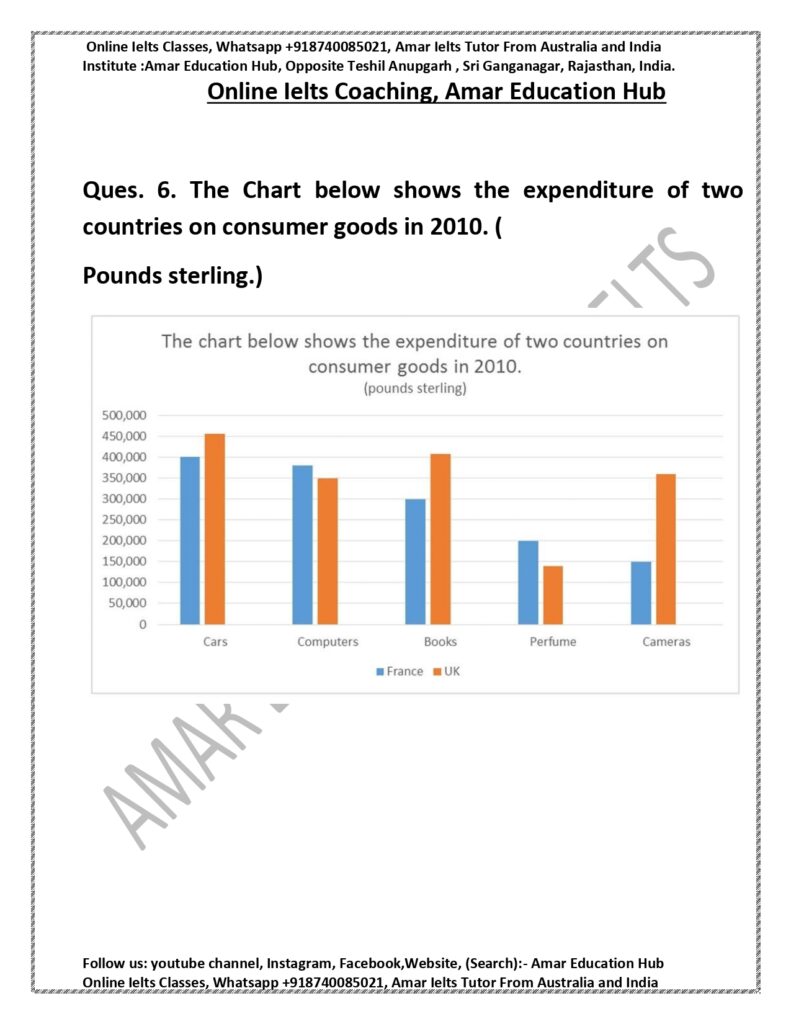
3.Pie Chart

4.Table
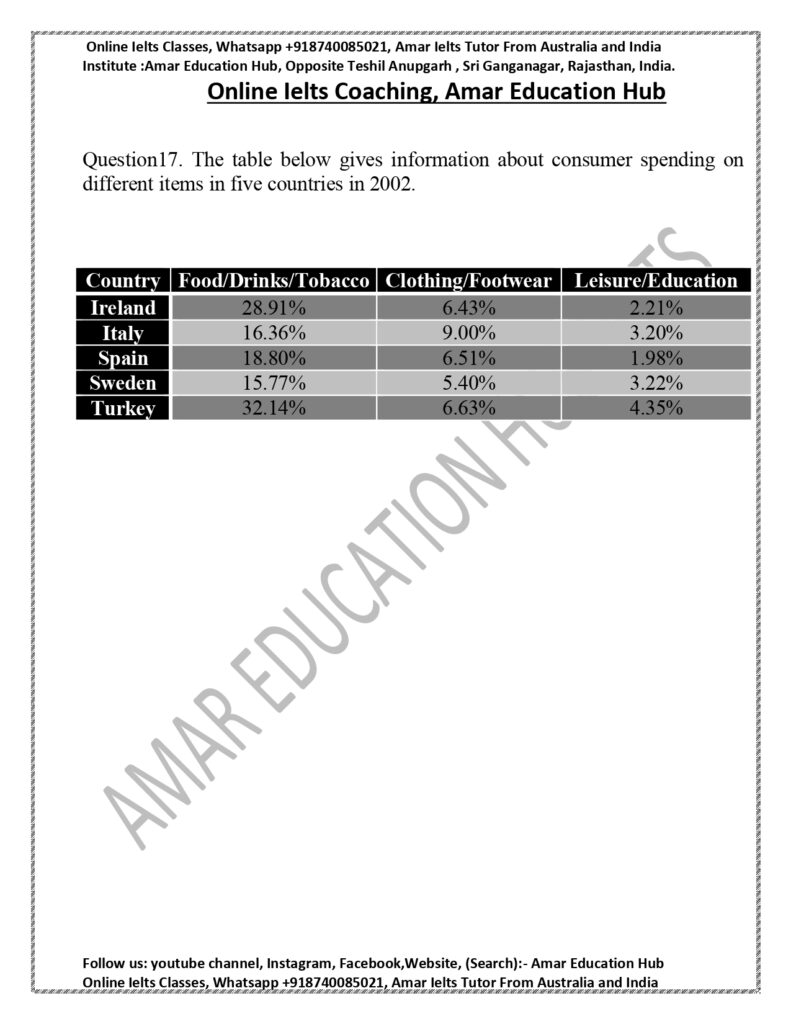
5.Diagram

6.Mix Multiple Charts or Graphs
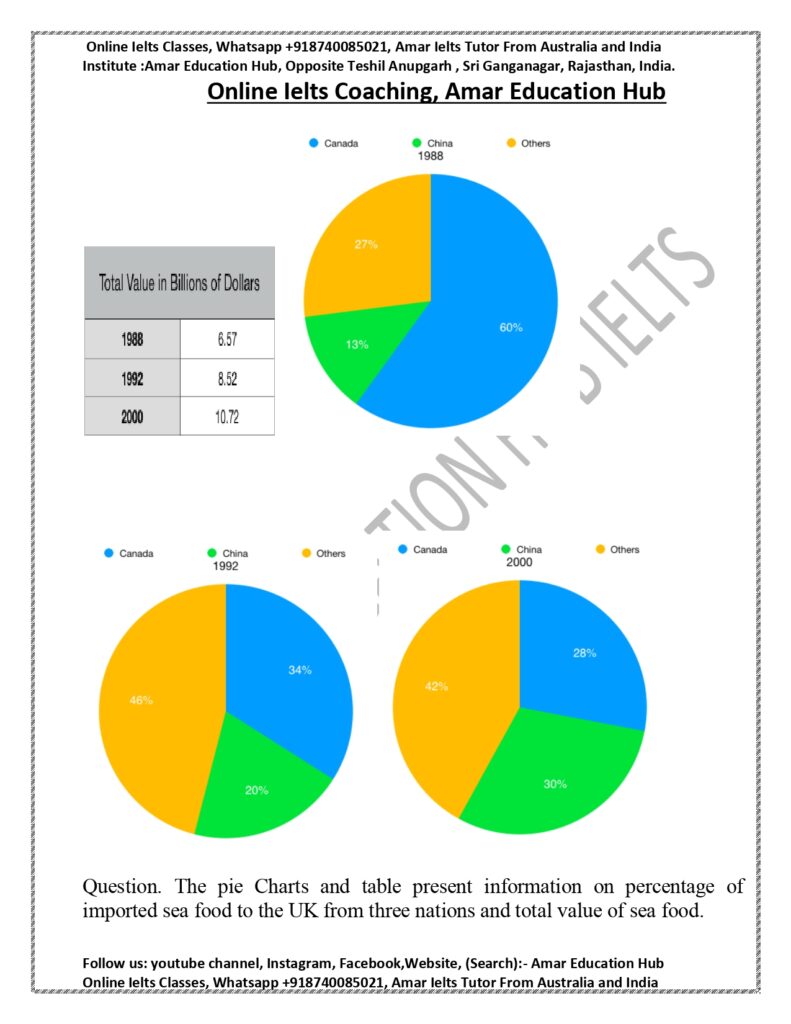
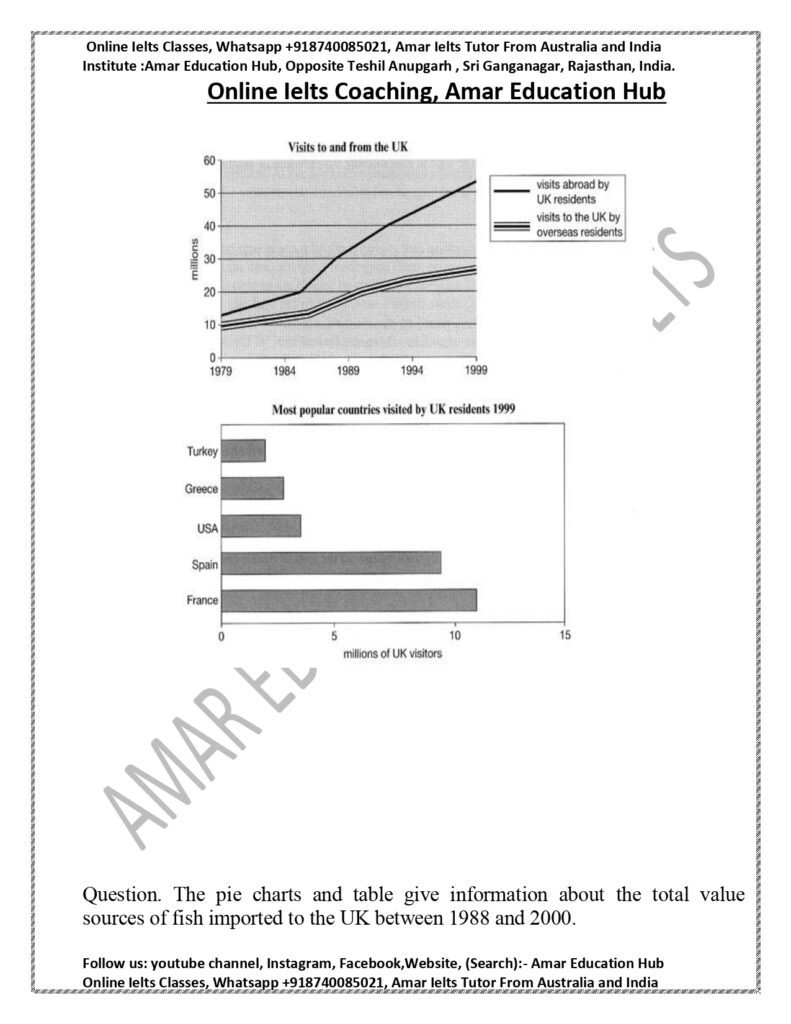
7.Flow Chart
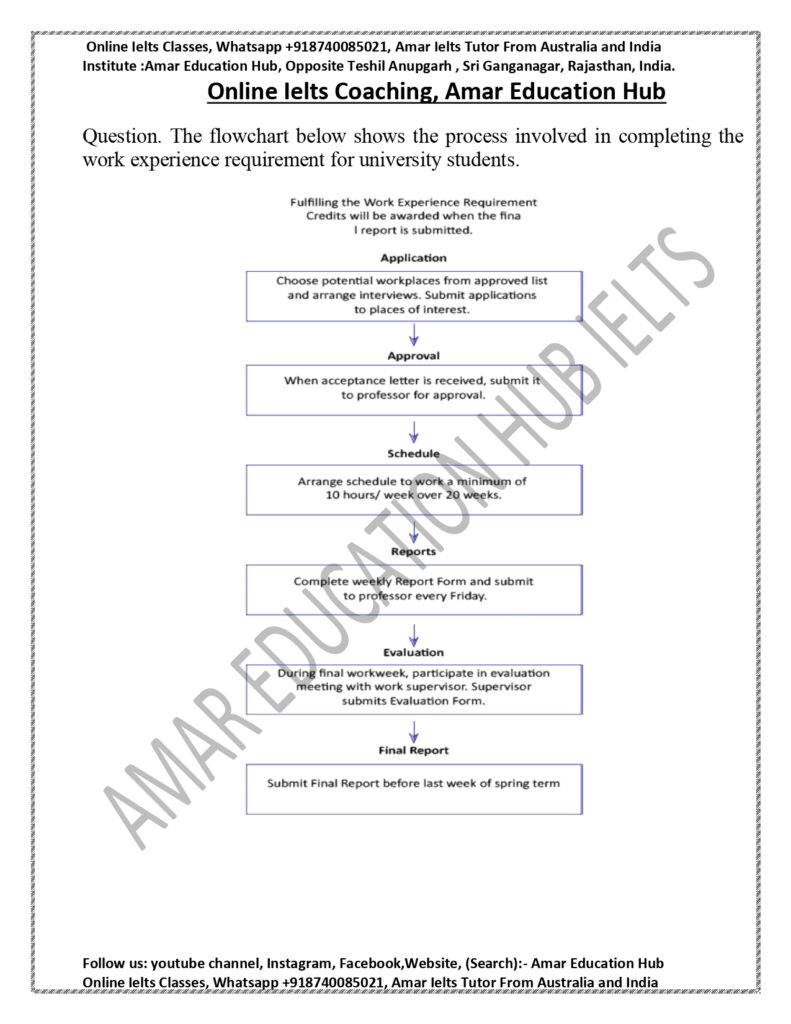
General IELTS Training
In General Task 1 Section of the exam requires you to write a letter.
You required to write a personal in the form of an informal, semi-formal or formal letter of at least 150 words.
- General Letter Information
- Students should spend 20 minutes on general Letter.
- Students must write over 150 words and will be penalised if your answer is too short.
Types Of Letter
- Complaint Letter
- Letter to A friend
- Apology Letter
- Amendment Letter
- Invitation Letter.
Types Of Letter
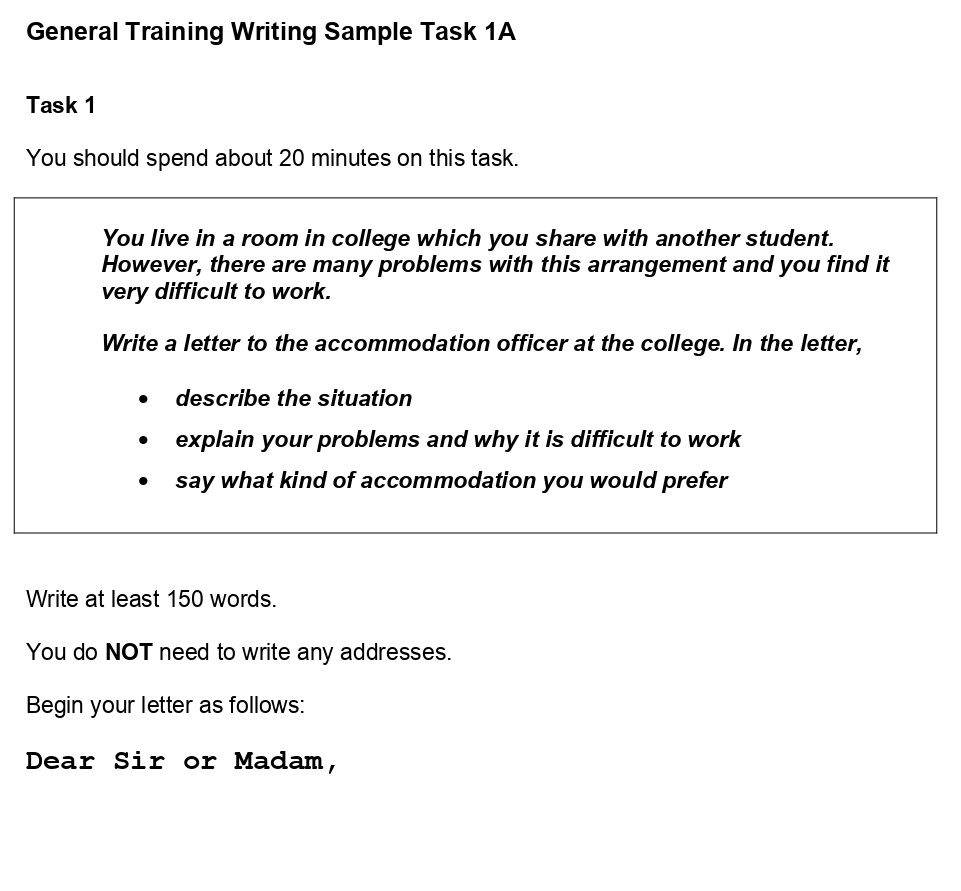
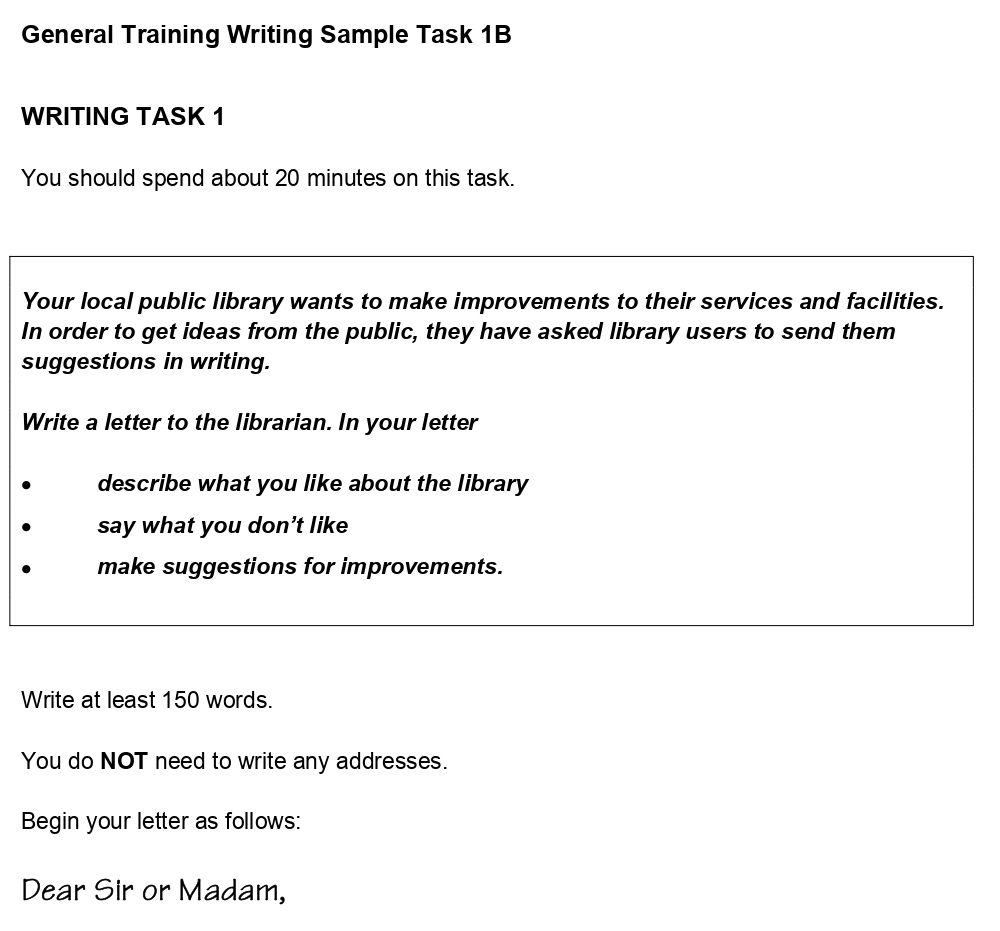
Writing Task 2
- Students should write task 2 within 40-45 minutes.
- You may be asked to write about one or more specificaspects of a topic:- causes, effects, problems, advantages and disadvantages etc.
- You are marked on use of a range of Vocabulary and grammar organisation and development and how you respond to the task. Specialist Knowledge of the subject is not being tested.
Five Different Type Of Questions
- Opinion Essay
- Balanced Opinion Essay
- Advantages and Disadvantages
- Discussion Essay
- Problem/Solution or Cause Effect Essays.
1. Opinion Essay
Opinion Essay is a formal academic Essay, which requires you to state your opinion. You need need to provide reasons and supporting points to convince the examiner to your answer.There are two common approaches to write an opinion Essay: one sided and balanced.One Sided Approach A one sided essay is an essay where your opinion is completely inclined to only one side of the argument, which means you eithercompletely agree or disagree with the issue given in the topic. You always give 2 to 3 reasons to support your opinion.
Question- Today, the life expectancy of people is much higher than before. Some people think that older people should continue to be involved in the workforce. To what do you agree or disagree?
2. Balanced Opinion Essay
A balanced Opinion Essay is an essay where you are inclined to one side of the argument but you do not deny the other side, which means you partly agree or partly disagree with the issue given in the topic.inclined to only one side of the argument, which means you eithercompletely agree or disagree with the issue given in the topic. You always give 2 to 3 reasons to support your opinion.
Question- Some countries pay extremely high salaries to people. Some people believe that the country must not do that and make a limit for the salaries. Do you agree or disagree?
3. Advantages and Disadvantages
This Essay is a formal Academic Essay. Students need to discuss both advantages and disadvantages. If questions ask for Opinion, then students need to give Opinion.
Question- Question Some people believe that women should play an equal role as men in a country’s police force or military force, such asthe army, while others think women are not suitable for these kinds of jobs. Discuss both views and give your opinion.
4. Discussion Essay
Discussion Essay is a formal academic Essay where you are asked to discuss 2 sides of a given argument. The task may or may not ask for your opinion on the issue, only give your opinion if the task requires so. Try to find 2 ideas for each side of the arguments.
Question- In many countries, good schools and medical facilities are available only in cities. Some people think new teachers and doctors should work in rural areas for a few years, but others think everyone should be free to choose where they work. Discuss and give your own opinion
5. Problem/Solution or Cause Effect Essays
Such Essays ask you to discuss the causes and solutions/effects of a given issue, for example the causes and solutions/effects of overpopulation.
Questions- Many people think it is important to protect the environment, but they make no effort on it themselves. Why is it so and what can be done about it?
Writing Task 2
- Task Response (25 Percent)
- Coherence & Cohesion (25 Percent)
- Grammar Range & Accuracy (25 Percent)
- Lexical Resource (25 Percent)
Detailed Explaination Of Marking Criteria
1. Opinion Essay
- Answers the question fully and relevantly
- Gives a position and opinion
- Gives and develops ideas.
- Scripts under the required Minimum word limit will be penalised
Band 5
- Addresses the task only partially; the format may be inappropriate in places
- Expresses a position but the
development is not always clear
and there may be no conclusions drawn - Presents some main ideas but these
are limited and not sufficiently
developed; there may be irrelevant
detail
Band 6
- Addresses all parts of the task although some parts may be more fully covered than others.
- Presents a relevant position although the conclusions may become unclear or repetitive.
- Presents relevant main ideas but
some may be inadequately
developed/ unclear.
Band 7
- Addresses all parts of the task
- Presents a clear position throughout
the response - Presents, extends and supports main ideas, but there may be a tendency to over-generalise and/or
supporting ideas may lack focus
Band 8
- Sufficiently addresses all parts of the task
- Presents a well-developed response to the question with relevant, extended and supportedideas
Band 9
- Fully addresses all parts of the task
- Presents a fully developed position in answer to the question with relevant, fully extended and well supported ideas
2 .Coherence & Cohesion
- Organises the writing, showing progression
- Makes the sentences and parts fit together.
- Organises paragraphs well and sentences clear.
Band 5
- Presents information with some organisation but there may be a lack of overall progression
- Makes inadequate, inaccurate or over-use of cohesive devices
- May be repetitive because of
lack of referencing and substitution - may not write in paragraphs, or
paragraphing may be inadequate
Band 6
- Arranges information and ideas coherently and there is a clear overall progression.
- Uses Cohesive devices effectively, but cohesion within and/or between
sentences may be faulty or mechanical - May not always referencing clearly or appropriately.
- Uses paragraphing, but not
always logically.
Band 7
- logically organises information and ideas; there is clear progression throughout
- uses a range of cohesive devices appropriately although there may be some under-/over-use
- presents a clear central topic
within each paragraph
Band 8
- Sequences information and ideas logically
- Manages all aspects of cohesion well
- Uses paragraphing sufficiently and appropriately
Band 9
- Uses cohesion in such a way that it attracts no attention
- Skillfully manages paragraphing
3 .Lexical Resource
- Use a range of words.
- Uses those words accurately.
Band 5
- Uses a limited range of vocabulary, but this is minimally adequate for the task.
- May make noticeable errors in spelling and/or word formation that may cause some difficulty for the reader
Band 6
- Uses an adequate range of vocabulary for the task.
- Attempts to use less common vocabulary but with some inaccuracy.
- Makes some errors in spelling and/or word formation, but they do not impede communication.
Band 7
- Uses a sufficient range of vocabulary to allow some flexibility and precision.
- Uses less common lexical items with some awareness of
style and collocation. - May produce occasional errors in word choice, spelling
and/or word formation.
Band 8
- Uses a wide range of vocabulary fluently and flexibly to convey precise meanings.
- Skilfully uses uncommon lexical items but there may be occasional inaccuracies in word choice and collocation.
- Produces rare errors in spelling and/or word formation.
Band 9
- Uses a wide range of vocabulary with very natural and sophisticated control of lexical features.
- Rare minor errors occur only as ‘slips’.
4. Grammatical Range and Accuracy
- Uses a range of grammar
- Uses that grammar accurately
Band 5
- Uses only a limited range of structures.
- Attempts complex sentences but these tend to be less accurate than simple sentences.
- May make frequent grammatical errors and punctuation may be faulty; errors can cause some difficulty for the reader.
Band 6
- Uses a mix of simple and complex sentence forms.
Makes some errors in grammar and punctuation but they rarely reduce communication.
Band 7
- Uses a variety of complex structures.
- Produces frequent error-free sentences.
- Has good control of grammar and punctuation but may make a few errors.
Band 8
- Uses a wide range of structures.
- The majority of sentences are error-free.
- Makes only very occasional errors or inappropriates
Band 9
- Uses a wide range of structures with full flexibility and accuracy; rare minor errors occur only as ‘slips’.

